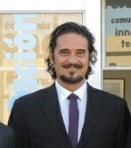
Hasan Jamal
Keimyung University,Korea
Title: Comparative Studies of Electrochemical Performance and Characterization of TiO2 /Graphene Nanocomposites as Anode Materials for Li-Secondary Batteries
Submitted Date: 18/7/2018
Biography
Hasan Jamal received his B.Sc. from The University of the Punjab, Lahore, Pakistan in 2015. Presently, He is doing M.Sc in Keimyung University, South Korea. He has published 1 research paper and also enrolled 1 patent in the fields of surface chemistry. He attended several national and international conferences. Current research projects are Silicone, Graphene as anode material for Li- secondary batteries.
Abstract
Using graphene oxide (GO) and titanium dioxide (TiO2), various types of composites comprised of graphene-bonded and grafted anatase TiO2 were synthesized without employing a cross-linking reagent in this study. Graphene sheets were uniformly dispersed among the TiO2 particles, to enhance the cyclability and electronic conductivity of the TiO2 anode for lithium ion batteries. A composite of GO prepared with three types of TiO2 (nanoparticles, nanorods, nanofibers) were synthesized by hydrothermal and calcination treatment. The reduction of GO increased simultaneously after calcination under argon atmosphere at 400 °C for 4 h. To achieve overall better electrochemical performance we used the anatase type of TiO2. The physicochemical properties were characterized by scanning electron microscopy (SEM), transmission electron microscopy (TEM), X-Ray powder diffraction (XRD), X-ray photoelectron spectroscopy (XPS) and Raman spectroscopy. Surface properties were measured by the Brunauer-Emmett-Teller (BET) & Barrett-Joyner-Halenda (BJH) method. The electrochemical properties were also investigated by Galvanostatic charge-discharge and Electrochemical Impedance Spectra (EIS). TiO2 nanoparticles composite with graphene delivered rate capability of 155 mAh g-1 at 0.5 C and restored the rate capacity of 109 mAh g-1 after 20 C, with a capacity loss of 30 %. TiO2 nanorods composite with graphene benefited from its unique morphology exhibited rate capability of 124 mAh g-1 at 0.5 C and regain the rate capability of 97 mAh g-1, with a capacity loss of 22 %. In addition, TiO2 nanofibers graphene composite with low surface area 19 m2g-1 and pore volume of 0.086 cm3g-1 transported rate capability of 68 mAh g-1 at 0.5 C and recover the rate capacity of 64 mAh g-1 after 20 C owing to its higher value of lithium-ion diffusion coefficient.

Tomas Gabriel BAS
Universidad Catolica del Norte,Chile.
Title: Internet of Nano-Things (IoNT) and Nano-Smart-Device to Promote Nano-Control in High Complexity Nano-Surgeries
Submitted Date: 20/7/2018
Biography
Tomas Gabriel BAS has completed his PhD from University of Quebec at Montreal (Canada) and postdoctoral studies from the same University. He is the director of MBA at Universidad Catolica del Norte (Coquimbo) Chile. He was the founder director of the Institute of Innovation based on Science and Director of Masters in Technology Management University of Talca (Chile). Manager founder and editor of the scientific journal (SciELO) \"Journal of Technology Management & Innovation\" (www.jotmi.org).. He has published 50 papers in reputed journals and 50 conferences.
Abstract
We are experiencing a real revolution regarding advances in nanotechnology in health. The solution to many health problems until today unattainable, found in nanotechnology, which is the engineering of molecularly precise structures that typically do not exceed 0.1 mm. This allows us to build nano-machines applicable to nano-medicine. The exponential advances in computer science, internet, telecommunications and smart-devices increase the possibilities of using them to promote nano-control in many fields of nano-medicine. We are particularly interested in their interaction in the field of high complexity nano-surgery.\r\nTo allow interaction between several devices is fundamental the communication between macro and nano-elements that are matched by three components (physical, virtual and biological elements) and configured through nano-sensors and nano-particles. The friendly architecture, with which this conglomerate of nano-elements is designed, is the key to the success or failure of the nano-device. The interconnection of nanoscale devices with existing communication networks and, ultimately, with the Internet defines a new paradigm of networks known as \"Internet of Nano-Things\" (IoNT). The adoption of the \"Internet of Nano-Things\" (IoNT) greatly facilitates intercommunication through the traditional macro Internet called \"Internet of Things\" (IoT). For the correct interrelation of the IoNT/IoT, in one area, such as high complexity nano-surgery, it is necessary to have different types of Nano-Smart-Devices: Nano-Nodes (machines responsible for calculations and data transmission). Nano-routers (increase the information, being more potent than the previous ones and have control commands). Interface devices (accumulate data and transmit it to a microscale and vice versa). Gateway (enables remote control of the IoNT/IoT network). For a successful communication between the different elements involved (IoNT /IoT/Nano-Smart-Devices/Nano-Devices), it is conceived, either through communication to a molecular band or communication to the nano-electromagnetic band. The first is the transmission and reception of information encoded in molecules, called molecular transceivers, while the second is the nano-electromagnetic communication that works through the transmission and reception of electromagnetic radiation (EM). These elements are the fundamental support for the diagnosis and subsequent nano-control of a highly complex nano-surgery, as accurate as possible.\r\n
